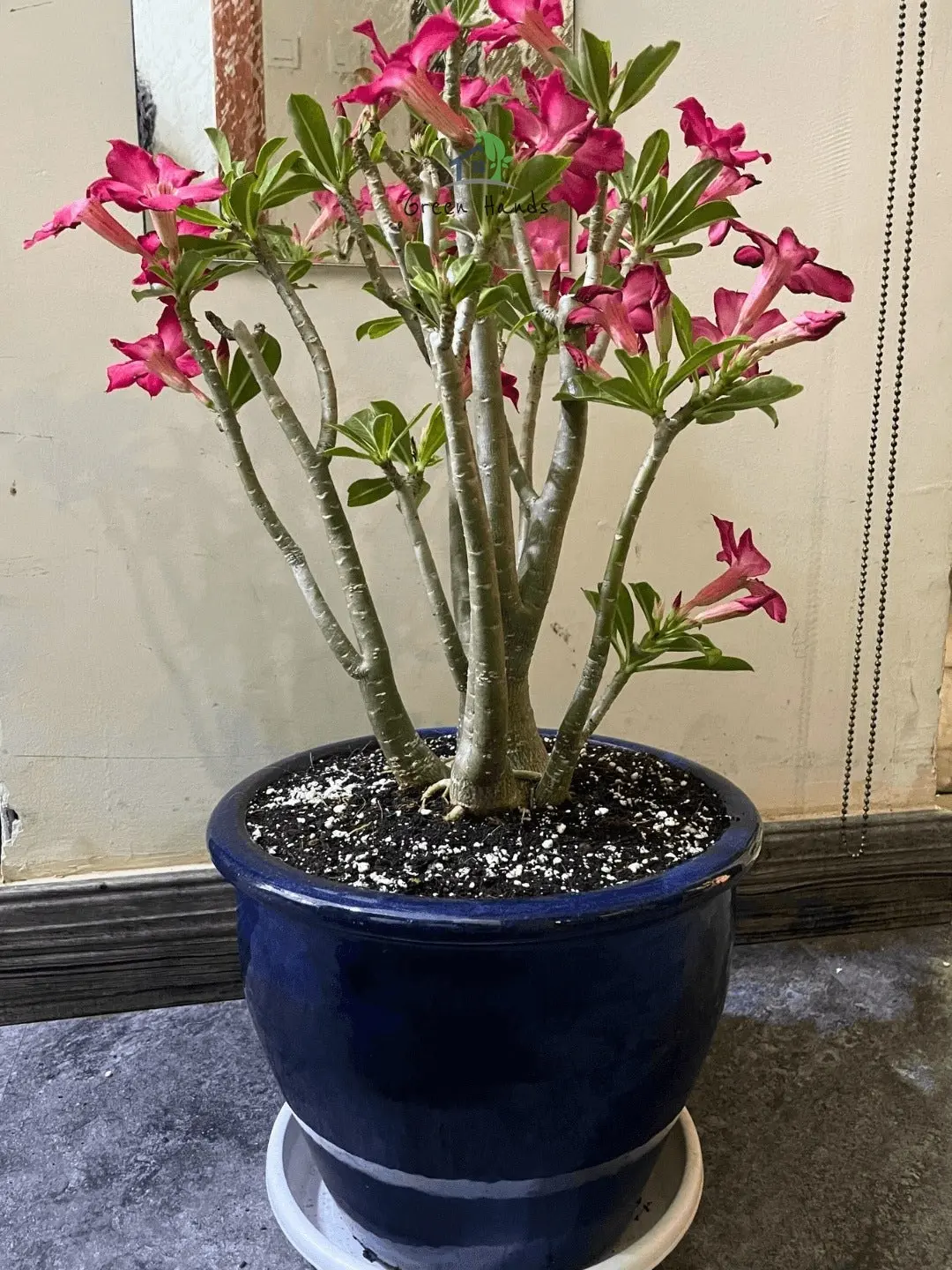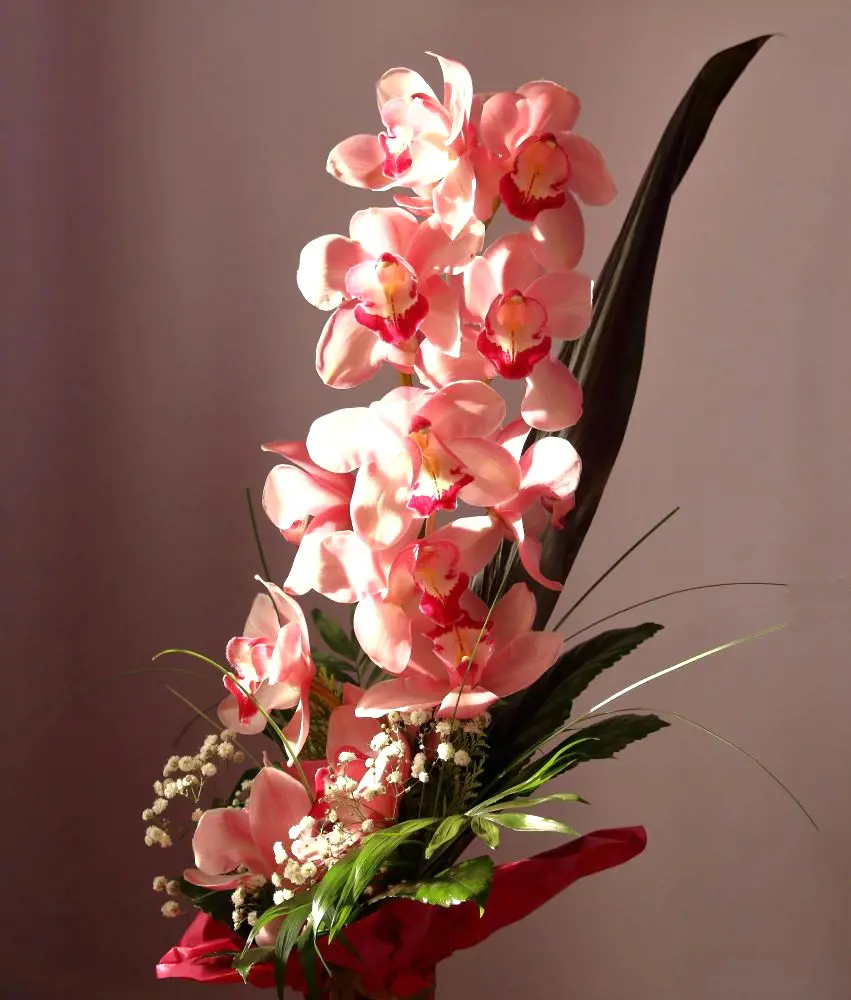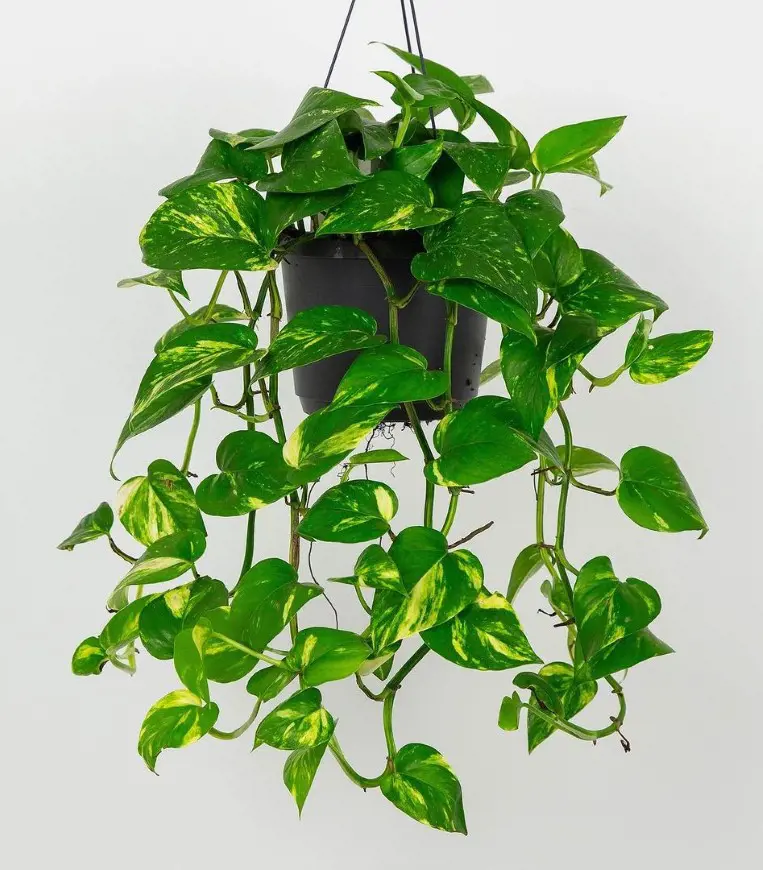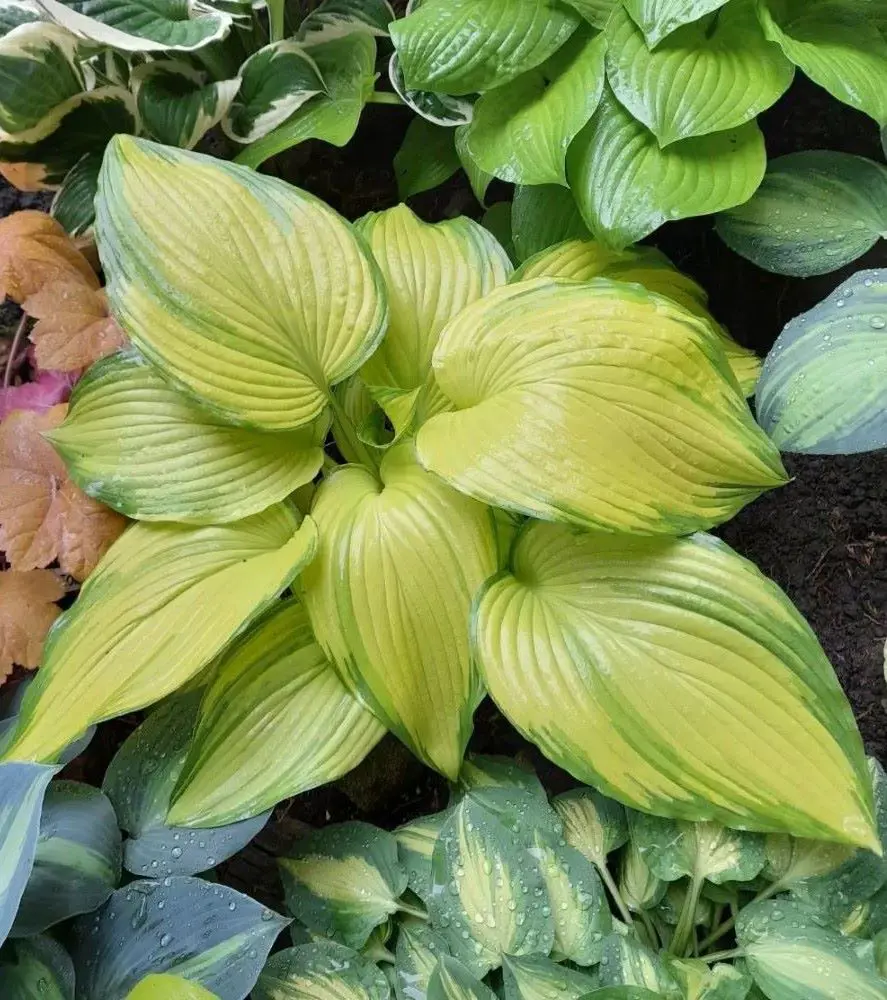Tips To Grow And Care Desert Rose Succulents

This post may contain affiliate links. If you make a purchase through links on our site, we may earn a commission.
Desert Rose is a perfect choice for indoor and outdoor gardening due to its striking and unique appearance. This succulent is characterized by fleshy leaves and a bulbous base and produces beautiful flowers in colors ranging from red to pure white, resembling roses.
Beyond its aesthetic appeal, these plants are also known for their air-purifying properties. They absorb harmful toxins and gases while releasing oxygen, contributing to a healthier indoor environment.
Desert Rose Succulents Overview
| Scientific Name | Adenium obesum |
| Common Names | Desert rose, mock azalea, impala lily, Sabi star |
| Plant type | Succulent |
| Size | 3–9 ft. tall |
| Sun Exposure | Full |
| Soil Type | Sandy, well-drained |
| Soil pH | Neutral to acidic |
| Bloom Time | Summer |
| Flower Color | Pink, red, rose |
| Origin | Tropical Africa, Arabian peninsula |
| Hardiness Zones | 11-12 (USDA) |
| Toxicity | Toxic to humans and pets |
What Is A Desert Rose Succulent?

Scientifically known as Adenium obesum, desert roses are a type of succulent plant. Their ability to store water in their stems allows desert roses to survive in dry, desert-like conditions, making them perfect choices for mini succulent gardens in arid locations. These succulents are generally slow growers, gradually reaching a height of around 1 to 3 feet.
These succulents are mainly known for their thick, swollen stems and beautiful, showy flowers. Their glossy, dark green leaves, often with a pointed tip, add to their allure. What makes them particularly striking is their trumpet-shaped flowers that bloom in various shades of pink, red, or white.
Desert Rose Care

Whether you decide to grow it indoors or outdoors, caring for your desert rose is pretty easy. These plants can handle both environments, but you might need to adjust a bit depending on where you live. If you are in a place with cold winters, it's safer to grow them indoors. But if you are in a warmer area, they will do fine outdoors.
Desert roses typically bloom in the warmer months, particularly from late spring through early fall. However, if you are living in a colder zone of the United States, such as zones 8 or below, they may bloom later in spring and stop blooming earlier in the fall.
Light
These succulents love lots of sunlight; they are happiest when they receive around 6 hours of direct sun every day. Without adequate sun exposure, they can start to stretch out and grow tall and weak.
If possible, give them full sun exposure, but they can also handle some shade, especially in hot climates. When grown indoors, place them near a south-facing window where they can receive ample sunlight throughout the day.
Soil
Always use a soil mix specifically designed for growing succulents and cacti plants. This type of soil is usually sandy and gritty, allowing water to flow through quickly and preventing root rot.
In addition, you can mix in some perlite or coarse sand to further improve drainage. But avoid using regular potting soil, as it tends to hold onto moisture too much, which isn't good for succulents.
Water
Being drought-tolerant plants, succulents do not require frequent watering. However, the frequency of watering also depends on factors such as temperature and the climate of the region where they are grown. During warmer seasons, they may require more frequent watering, while in cooler seasons, they can go longer periods, sometimes several weeks, without water.
Allow the soil to dry out completely between waterings, using only water at room temperature rather than water that is too cold, as extreme temperature changes can shock the plant.
Temperature
Desert roses generally prefer warm temperatures ranging from 21°C to 32°C. They can tolerate even higher temperatures, but prolonged exposure to extreme heat can be very harmful. In such conditions, your plant may start to show signs of stress, such as wilting, yellowing, or even burning of leaves. Provide some shade during the hottest parts of the day, or bring the plant indoors if temperatures become excessively high.
Humidity
Humidity is not actually a crucial factor for the growth of desert rose plants. These succulents naturally thrive in arid environments with low humidity levels, preferring dry air and requiring minimal moisture in the atmosphere to flourish. In fact, high humidity can sometimes lead to problems such as fungal diseases or root rot for these succulents.
Fertilizer
These plants do not need a lot of fertilizer to thrive. If you wish, you can use a balanced, water-soluble fertilizer specifically designed for succulents and cacti. Look for a fertilizer with a formulation like 10-10-10 or similar, which provides a balanced ratio of nutrients.
Avoid over-fertilizing, as this can harm your plant. Once a month or every six weeks is generally sufficient. During the fall and winter months, you can skip fertilizing altogether.
Propagating Desert Rose

There are several methods for propagating desert rose succulents, such as stem cutting, growing seeds, or grafting, but the best among these methods is stem cuttings. This method is simple and effective for growing new plants. You just need a healthy cutting stem from the parent plant and plant it in the soil. Here is how to propagate from a stem cutting:
Material Needed
- Pruning shears or scissors
- Container
- Well-draining soil mix
- Rooting hormone (optional)
- Water can
Steps for Propagation
- Start by selecting a healthy stem from the parent plant. Choose a stem that is mature but not too woody, ideally with several leaves attached.
- Use sharp, clean pruning shears to make a clean cut just below a leaf node, which is where the leaves attach to the stem.
- Remove any leaves from the bottom few inches of the cutting to expose a clean section of the stem.
- You can dip the cut end of the stem into rooting hormone to encourage faster rooting (optional).
- Plant the cutting into a pot filled with well-draining soil. Make a small hole in the soil with your finger and gently insert the cut end of the stem into the hole. Firmly press the soil around the base of the cutting to provide stability.
- Place the pot in a warm, bright location with indirect sunlight. Keep the soil lightly moist.
- Within a few weeks to a couple of months, you will start to see roots developing from the base of the cutting.
- Once the cutting has established a good root system and is showing new growth, you can transplant it into a larger pot.
How to Grow Desert Rose From Seed

The best time to sow seeds is in spring, so you might have to wait until the weather warms up. Select a small pot with proper drainage holes, just big enough to accommodate the seed and allow for some initial root growth. Use a free-draining mix specifically designed for these succulents.
Planting
Soak the seeds: Soak the seeds in lukewarm water for 24 to 48 hours to encourage germination. This is not essential, but it can speed up the process.
Fill the pot: Fill the pot with your chosen potting mix, leaving about 1 inch of space from the rim.
Plant the seeds: Sow the seeds individually, spacing them about 1-2 inches apart. Gently press them into the soil surface without burying them deeply.
Cover and water: Lightly mist the soil with water and cover the pot with a clear plastic bag or wrap to create a humid environment.
Germination and Care
Light and temperature: Place the pot in a warm location (around 80-85°F) with bright, indirect sunlight. Avoid direct sunlight, especially during the hottest part of the day.
Watering: Keep the soil consistently moist but not soggy. Water from below by placing the pot in a tray of water and allowing it to soak up the moisture. Avoid overwatering, as this can rot the seeds.
Humidity: Maintain high humidity by misting the inside of the plastic cover regularly. You can also remove the cover for short periods each day to allow for air circulation.
Germination: Germination can take anywhere from 1-4 weeks. Once you see seedlings emerge, gradually remove the plastic cover and introduce them to more direct sunlight.
Transplanting: When the seedlings have developed several true leaves, you can transplant them into individual pots with slightly larger pots and fresh potting mix.
How To Grow Desert Rose In A Container?

Growing a desert rose succulent in a container is quite easy but requires careful attention. Choose a wide, shallow pot with ample drainage holes; terracotta works well due to its breathability. Opt for a well-draining succulent mix, and consider adding perlite or sand for extra drainage.
When planting, leave the bulbous caudex (base) partially exposed above the soil line. This prevents rot and allows for proper air circulation. Avoid burying the stem deeply, as it can restrict growth. Gently firm the soil around the base of the plant for stability, but don't overpack.
Repotting Desert Rose Succulents

While your dessert rose doesn't need constant repotting, keeping an eye on signs will tell you when it's time for a bigger home. Check your pot first – visible roots circling the drainage holes or the plant itself appearing pot-bound are clear indicators. Additionally, stunted growth despite proper care can point to root restriction.
It's best to repot in early spring, the season of active growth, giving your plant ample time to adjust. However, avoid repotting during dormancy and after flowering.
Desert Rose Types

The dessert rose succulent is typically used to refer to Adenium obesum, a popular flowering succulent native to Africa and the Arabian Peninsula. However, there are actually several other Adenium species and numerous hybrids that are also called desert rose. Here are some of the most common types:
Adenium obesum
This is the most popular desert rose that boasts a plump, bulbous caudex resembling a miniature baobab tree. Its thick, fleshy leaves come in various shades of green and may exhibit variegation. During the blooming season, it produces clusters of stunning trumpet-shaped flowers in vibrant colors like red, pink, white, and even purple.
Adenium arabicum
This majestic desert rose exhibits the largest caudex of all species, potentially reaching up to 8 feet in diameter in its natural habitat. Its leaves are typically smaller and narrower compared to Adenium obesum, and its flowers come in shades of pink, red, and white.
Adenium swazicum
This unique variety features a more compact central stem and slender, branching stems. Its leaves are smaller and thinner compared to other species and come in shades of green with interesting marbling patterns. The flowers are typically red or pink and bloom in clusters.
Adenium multiflorum
This charming succulent features a slender caudex and multiple branches, creating a shrub-like appearance. Its leaves are smaller and more delicate compared to other species and come in various shades of green. The flowers are typically white or pink and bloom in large, fragrant clusters.
Challenges And Issues With Desert Rose

Some common problems with desert rose include:
Yellowing Leaves
Cause: The yellowing leaves on these succulents are caused by overwatering and nutrient deficiency.
Solution: Adjust your watering routine only when the soil is dry and consider applying a balanced, slow-release fertilizer to provide essential nutrients.
Spotting on Leaves
Cause: Pest infestations, including aphids and spider mites, along with diseases such as powdery mildew, lead to these issues.
Solution: Ensure good ventilation and well-draining soil. Plus, monitor your plant for signs of disease and address them promptly using fungicides and other appropriate treatments.
Mottling of Lower Leaves
Cause: This problem can be caused by over-fertilizing and nutrient imbalance.
Solution: Use well-draining soil and provide sufficient sunlight. Repotting the plant in fresh soil also helps prevent this problem.
Recent posts
Plant Care
Plant Care
How To Take Care Of An Orchid Plant? 11 Tips And Tricks
If you love gorgeous orchids but are worried they're too high-maintenance, don't worry. This guide is like a cheat sheet for orchid newbies. Forget fancy words and confusing schedules — we're talking about how to take care of an orchid pla...
Plant Care
How To Grow and Care For Peace Lily Plant
The Peace Lily is an indoor plant that is most valued for its beautiful and shiny green leaves as well as the white blooms. Hard and tolerant, it’s naturally a low-maintenance addition to your plant collection. If you are confused, let us tell ...
Plant Care
Pothos Plant Care And Growing Guide
Adding a Pothos plant (Devil’s Ivy) to your home benefits the environment and aesthetic of your personal space. It's easy to maintain and is loved for it's ability to enhance indoor air quality by removing toxins like formaldehyde, benzene, and...
Plant Care
Snake Plant Care and Growing Guide
Snake plants require low maintenance, and low light and are almost impossible to kill, making them a perfect plant for beginners and seasoned gardeners. In this guide, we will explore essential care tips and optimal growing conditions for snake plant...
Plant Care
How To Plant, Grow and Care Majesty Palm
The majestic palm, scientifically known as Ravenea rivularis, makes for a stunning indoor tree with its lush and grand fronds. Originating from Madagascar's river banks, this resilient houseplant is cherished not only for its beauty but also for its ...
Plant Care
How To Grow And Care For A Hosta Plant
Hosta plants are widespread perennials, often grown for their beautiful and diverse foliage. They are extremely easy to care for and can thrive in various conditions, particularly shade or semi-shade. These hardy plants can last for many years and re...







